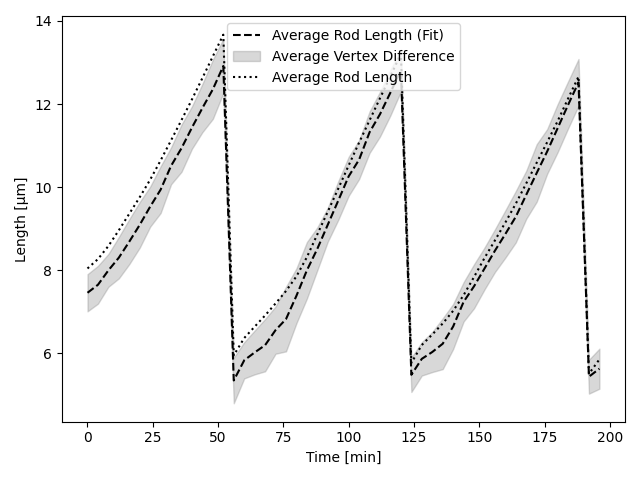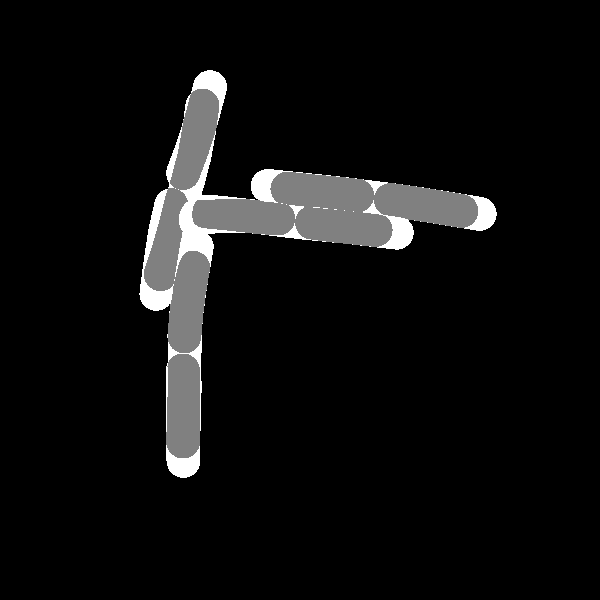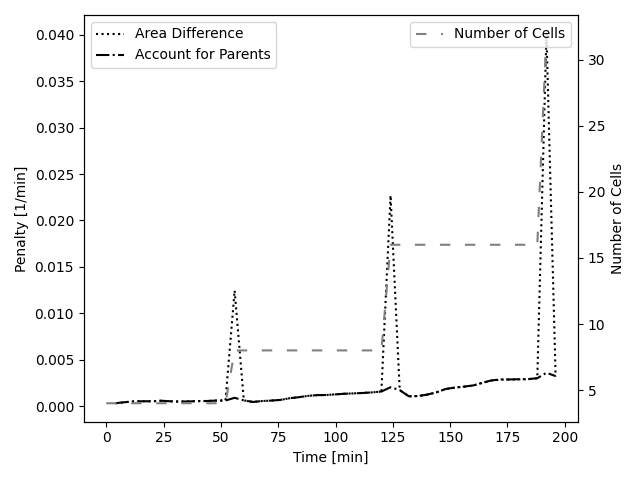Fitting-Methods
Extracting Positions from Masks



Snapshots at 40min, 80min and 120min All images show masks which have been generated by a simulation run. The positions associated to the individual cell agents which have been estimated by our fitting process are displayed with dark crosses while the segments which actually constitute the cell are displayed as a contiguous bright line.

To quantify the effectiveness of our fitting algorithm, we compare the average rod lengths of the known simulated agent and teh eestiamted positions with each other. Furthermore, we calculated the average difference per vertex between the simulated position and the estimated one. We can clearly see that the fitting method slightly underestimates the total rod length. This can be attributed to the Skelezonization algorithm [8] which truncates the ends of the point set more. As time increases, our fitting method becomes less accurate. However, overall slopes and division events are still captured correctly. This behaviour is due non-trivial geometries of the cell which makes it harder to properly estimate the approximating polygon.
Constucting a Cost Function
Talk about how to measure differences between masks


Snapshots at t=40min and t=60min. All cells have undergone a division event.


Calculations of differences between the images. The first image purely calculates the differing area while the second approach also takes into account if cells are related and weighs this specific overlapping area less.

We performed penalty calculations for successive simulation snapshots with two different techniques. Due to the overall exponential growth of the ensemble, we also expect an exponential difference (its derivative) reported by our implemented methods as time increases. We can clearly see that cell-division introduces undesirable spikes between individual time-steps when not accounting for cell-lineage. When weighing differences between daughter and parent-cells with a penalty of \(p=0\), these enormous spikes are regularized.